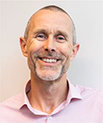Minimising green hydrogen capital expenditure: lessons learned from Europe
Paul Anthony Curry A *A

Paul A Curry is a chemical engineer with 35 years’ experience across the full project lifecycle in the energy and chemicals industry. Currently employed by Worley Consulting as a Senior Technical Specialist and Project Manager Paul has lived and worked in Indonesia, China, Germany and most recently the Netherlands supporting a major brownfield sustainable aviation fuels program. He is currently based in Worley’s Brisbane office and has managed a number of studies to FEED level for green hydrogen and ammonia developments in Australia, Chile and South Africa. |
Abstract
European policy initiatives and impacts of the war in Ukraine have driven large green hydrogen projects in Europe at a faster pace than in Australia. Several of these, at capacities over 100 MW, have now taken a final investment decision (FID) with detailed engineering and construction underway. This paper discusses learnings from the development and progression of these projects through FID and into construction and how this translates to Australian projects progressing through FID at scale. There are many factors including policy and incentives, offtake certainty and pricing, cost and availability of power, water and land, that influence the progression of projects through FID. Once these have been navigated a further hurdle to overcome is the magnitude of the project’s capital expenditure (CAPEX) and the speed at which this capital can be converted into an operating asset. Green hydrogen production, when coupled with a downstream derivative, includes facilities which span multiple industry sectors including water treatment, industrial gases and high hazard process facilities. Proponents proposing to develop green hydrogen projects range from start-ups to multinational integrated energy companies bringing varied approaches to project development and engineering and differing levels of understanding of the key CAPEX levers. Insights into these levers and how the mix of industry sectors and proponents influence the plans, expectations and ultimately the costs are discussed including: (1) Economies of scale and technology development. (2) Brownfield developments and leveraging existing or common user infrastructure. (3) The project delivery and engineering model to achieve a minimum viable product.
Keywords: CAPEX, capital expenditure, common user infrastructure, decarbonisation, energy economics, energy transition, FID, green hydrogen.
 Paul A Curry is a chemical engineer with 35 years’ experience across the full project lifecycle in the energy and chemicals industry. Currently employed by Worley Consulting as a Senior Technical Specialist and Project Manager Paul has lived and worked in Indonesia, China, Germany and most recently the Netherlands supporting a major brownfield sustainable aviation fuels program. He is currently based in Worley’s Brisbane office and has managed a number of studies to FEED level for green hydrogen and ammonia developments in Australia, Chile and South Africa. |


